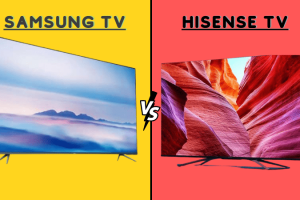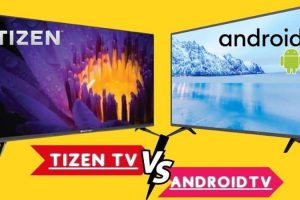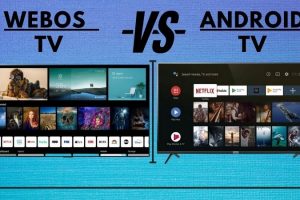Samsung introduced curved TVs into the market to become a big hit. However, curved TV hype faded when consumers complained about their problems.
Customers complained most about the price tags and impracticality of these TVs. They were mainly withdrawn from the stores for this reason as well.
As a result, curved screens cause gradual disappearance from the shelves. This article will discuss 6 major reasons curved screen TVs failed.
So you can make an informed decision about buying a curved TV.
1. Faulty Display Design
Chiefly, the designers manufactured the curved TVs with the picture of IMAX cinemas in their heads. IMAX Theatres were created to trigger viewers’ peripheral vision.
The makers of curved TVs were trying to offer a similar display but in a smaller size.
However, their hard work didn’t pay off, and the strategy never worked out as intended.
The reason for failure is that curved screens could not produce a reliable display due to their smaller display size and curved edges.
By comparing the curved screen to massive IMAX theatre displays, we find that the IMAX display is huge that can’t be replicated by the screen of home TVs.
In simple terms, this was a clear design error that cannot be modified.
Also, check our guide on Are curved TVs good for gaming?
2. Reflections causing Glossy Screen
Here, a glossy screen tends to affect the viewing angles. When glossy screens are fitted to TVs, they are more likely to get reflections that can block your view. This doesn’t offer you the same experience of viewing just like flat-panel TVs offer.
Undoubtedly, curved TVs are prone to have problems with reflections. In case if you are willing to fix the reflection issues of the curved TV screen, then a few hacks can help you there:
- First, change the screen angle of the picture to limit any reflections. Remember to shift the display screen far off from the light source. This can create reflections and makes a clear difference.
- Secondly, you can fit a matte picture protector on the screen to counter reflections. However, finding the exact matte display layer that properly covers your TV can be challenging.
Additionally, sticking a matte layer to your TV screens can be worrisome because air bubbles might get trapped under your protector. So, this can be a tricky solution for large screens.
- The easiest trick to wade off reflections is by turning off the lights to enjoy experiences like commercial cinemas. This might not work in the morning when natural light is available.
- You can also place LED strips on the back side of your TV if you have one of the early models. They work as bias lights and offer ambient lighting around the sweet spot.
As a result, it corrects the contrast ratio via white accent light, besides correcting eye strain.
- Placing a lamp at the back of the TV can also minimize other light resources that create reflections. However, you can also prefer to change the seating position.
Primarily, setting up lamps is easy than Bias Lights. However, LED strips are more likely to counter reflections by transferring the light behind the TV set.
3. Subjected to Glare
In some terms, glare is somewhat similar to reflection problems and affects the picture quality. It often occurs when light hits the display of your TV from the front.
The best method to reduce glare is switching off or removing all lights from your room. In addition, adjust your TV display setting to improve immersion and raise the brightness level.
Also, manoeuvre the color intensity, and contrast until the glare is improved to deliver a better viewing experience.
Pick the right place for your curved screens to focus on the off-centre area. Put the TV far off from windowpanes or sunlight. Sunlight not only triggers glare but can damage your TV.
Try altering the positions of the curved TV. Move the TV up and down or tilt it right or left to set a perfect watching angle that avoids glare from the screen.
Minimize the lighting covering your curved TV. Leave only a few lights open that are necessary. Search for anti-glare protectors that are well-fitted.
However, finding an anti-glare filter that perfectly fits your TV is a bit challenging, but it’s not much risk to try it. You might get a complimentary protector alongside your smart TV package.
Also, check our buying guide on the best anti-glare TVs.
4. Blocked Viewing Angles
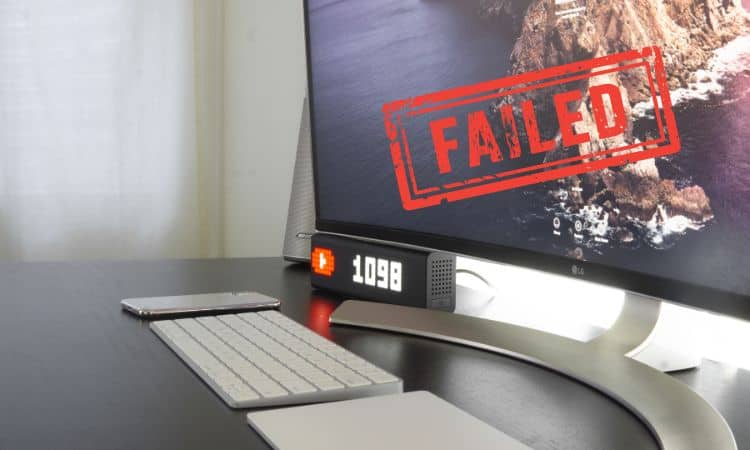
Curved TVs have narrow viewing angles as compared to flat-screen TVs. Well, it’s a major concern when multiple people watch Samsung TV.
Pressingly, curved screens try to offer peripheral vision stimulation when viewed from the front with curved edges.
The premium viewing angle for any curved TV lies in the middle of the TV. So, looking from an angle pushes you out of that arc, which lowers the picture quality on LCD TVs.
Unfortunately, it’s not easy to unblock the viewing angles to make a clear difference. For this, try to contact an expert technician who knows well about OLED technology.
If you want to know more about viewing angles, check our article on what type of TV has best viewing angles?
5. Placement of the Curved TV
If you want to create an aesthetic look within your sweet spot, placing a curved screen will give you a tough time. Compared to flat tv, a curved screen seems too weird when positioned on a wall mount.
However, changing the seating position and setting may help improve image quality. Whatever placement you try, curved TVs tend to appear a little odd in your room setting.
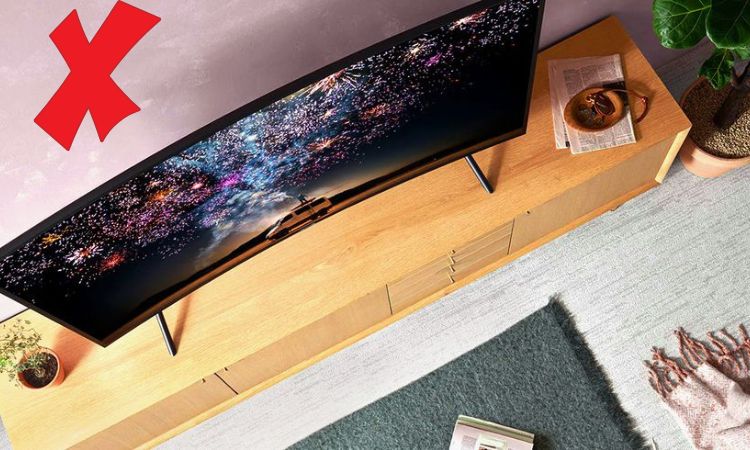
6. Lack of Availability
Although the unavailability of a curved TV won’t be settled as a technical issue, it can put you in chaos when you require technical repairs or support.
Because curved screens disappeared from the market long ago, you might find it tricky even to get one.
Moreover, you may have a tough time searching for third-party support in case something doesn’t work.
The availability of curved-screen TV parts is also questionable, so replacing a part can be troublesome. If you’re facing any curved screen issues, get it checked physically.
The best way to do it is by contacting a service center approved by Samsung company.
Although, asking for a local repairman’s help might be a waste of time as curved TVs are uncommon compared to flat-screen TVs.
7. Concerns About Appearance
While the sleek curvature of these TVs was initially touted as a design advantage, it turned into a drawback for many consumers.
Due to their rounded shape, they were less easily integrated into conventional decorating schemes or mounted to flat walls.
The trend toward minimalist and modern home aesthetics clashed with the elaborate design of curved TVs, making them a difficult fit in many living spaces.
What are the Pros and Cons of Curved TVs?
Although some problems are meant to be fixed while watching curved TVs, it has some advantages that are worthy of your investment.
Theater-like Display
TV directors make screenplay as realistic as possible so the audience can have a lifelike experience. And curved TVs deliver it exceptionally on your home screen.
Curved TVs were built to stimulate eye movement and replicate peripheral vision.
Since your eyes sense the arc of the screen, the pictures become more three-dimensional and natural. It feels like you’re living inside the movie.
Broader Field of View
The slightly arched design of the curved screen offers you more space in your vision field.
Although, it can only be experienced when you’re positioned in the right spot, the front and center.
Sharpened Image Quality on the Edges
The curved TVs track your eye shape, thereby making pictures seem to get sharper at the corners.
In addition, the higher image sharpness tends to be why high-scale cinemas adopt curved screens.
Although, the enhanced picture clarity is highly observable on curved TVs with huge displays than on TVs with miniature screen sizes.
Greater Picture Depth
The picture feels three-dimensional when people watch curved TVs for the first time.
That can be made possible by using different depth planes on pictures.
Better Contrast on Display
When curved TVs are viewed from the right spot, you can attain enhanced contrast onscreen when watched straight-on.
Widespread Viewing Angles
Viewing angles on a curved TV can be its strength and weakness.
Viewing from the off-center position enhances the color effects and reduces contrast, offering high image quality.
Although watching it from an angle disrupts the picture quality and makes it opaque for the viewer.
Cons of Curved TVs
Here is the list of the frequent problems with having a curved screen.
- You must watch curved TVs from the central position or the picture warps.
- You might face multiple reflections on the display compared to a flat TV.
- You may find it hard to place curved TVs in your lounge.
- Curved screens are expensive compared to a flat-screen TV.
- Curved TVs are fruitful only when their screen size is enormous.
- Repairing curved TVs is not an easy job. The market is no longer available, so finding replacement parts will be hectic.
The Bottom Line
In sum, curved TVs are not ideal for every viewer. Mainly curved screens are best enjoyed when used by a few people, as their viewing angles are very restricting.
Flat TVs are suitable for multiple people to watch as they reflect light rightly.
FAQ’s
Are curved TVs good or bad?
Consumers and experts have different thoughts about curved TVs. Their curved screens try to make watching more realistic by imitating the natural curve of human vision.
This can help people see more depth and reduce distortion at the edges. But how well they work varies significantly on screen size, viewing distance, and the viewer's preferences.
Some users find the curve annoying and prone to causing reflections, while others like how it makes them feel like they are in the game. In the end, whether curved TVs are good or bad is a matter of opinion that depends on the person and where they are being watched.
Why did Curve TV fail?
Curve TV faced several challenges that contributed to its failure in the market. One key factor was the limited practicality of the curved screen design.
Additionally, the manufacturing costs for curved displays were higher, leading to higher retail prices that many consumers were unwilling to pay. The lack of compelling content optimized for curved screens also hindered its appeal.
As flat-screen alternatives improved picture quality and affordability, Curve TV failed to provide a convincing value proposition, ultimately leading to its downfall in a competitive television market.
What are the disadvantages of a curved TV?
Curved TVs, while visually appealing to some, come with several disadvantages. One major drawback is the potential for distorted viewing angles. The curvature can cause uneven brightness and colour accuracy when viewed from off-center positions, making it less suitable for group watching or larger rooms.
The curved design can also lead to annoying reflections and glare, particularly in well-lit rooms. Mounting and placement options can also be limited due to the curvature, making wall mounting more challenging.
Lastly, the cost of curved TVs is often higher than their flat counterparts without substantially improving overall picture quality. As a result, consumers should carefully weigh these disadvantages against any perceived aesthetic benefits when considering a curved TV.
Jason Reynolds
I have been working in the electrical and Audio/Visual field for over 19 years. My focus for EagleTVMounting is to provide concise expertise in everything I write. The greatest joy in life is to provide people with insight information that can potentially change their viewpoints. Our #1 goal is just that!


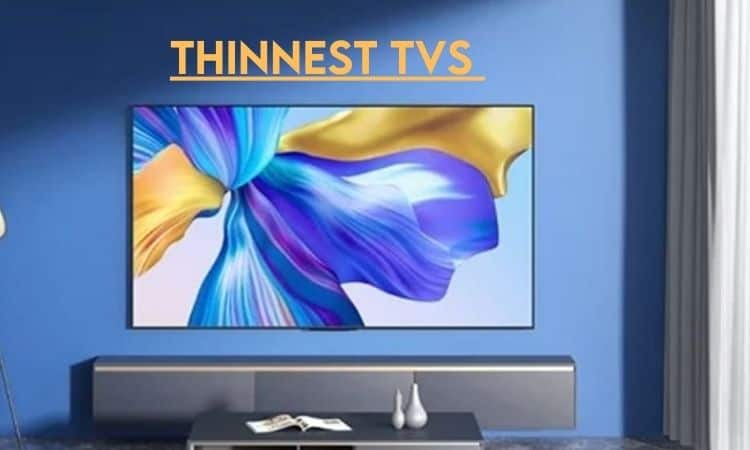
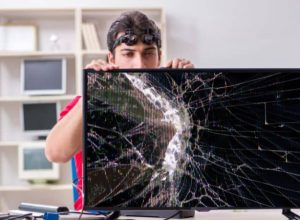
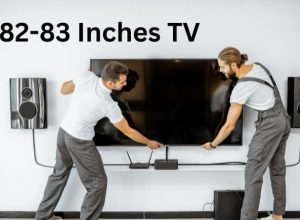


![Best Smart TVs Under $200 10 Best TVs Under $200 in 2022 [Smart, 4K, Top Rated]](https://eagletvmounting.com/wp-content/uploads/elementor/thumbs/Best-Smart-TVs-Under-200-1-pxsvk5gy9n9zpv0lrzhk644n1gvwdxv32ixo8gyqoo.jpg)
